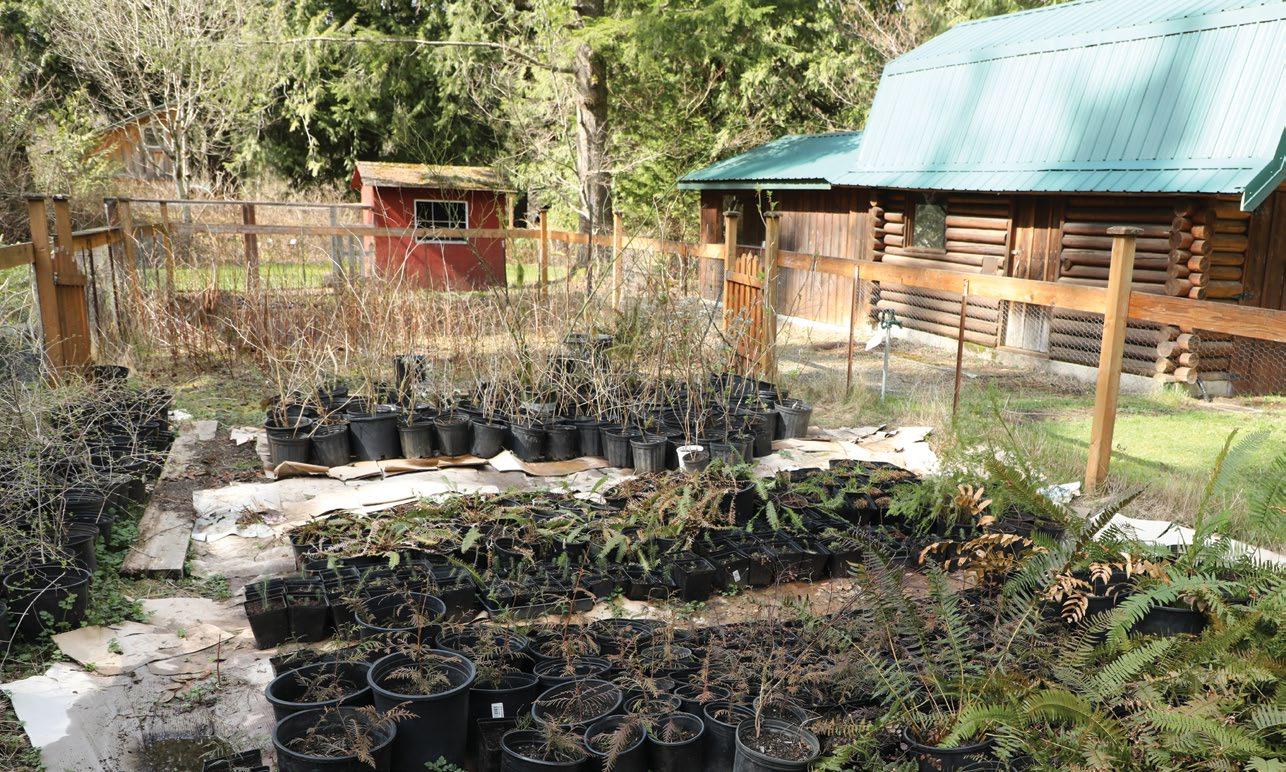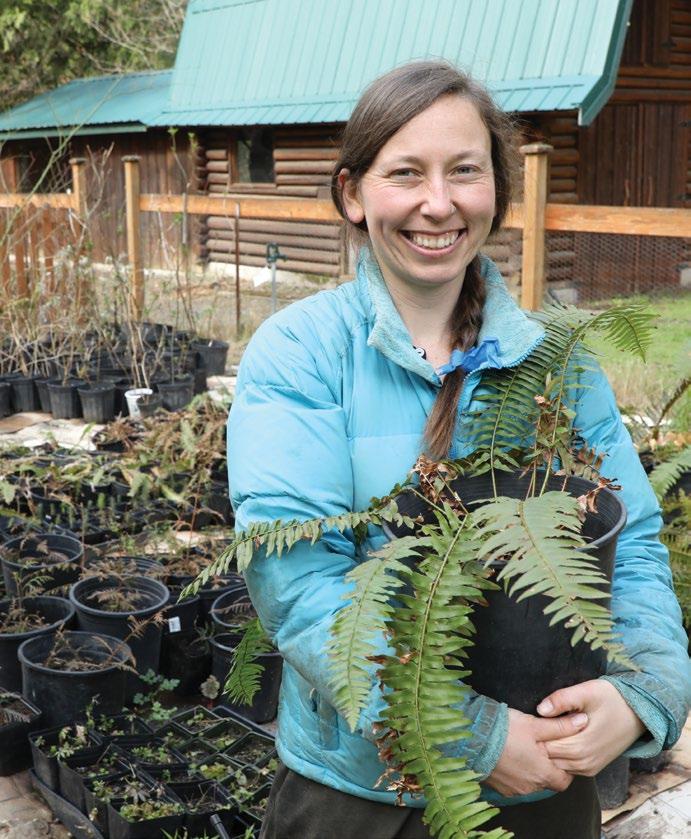
2 minute read
Native plant nursery blooms in the Green River Watershed
Tacoma Water has numerous properties and pipeline rights-ofway located all over Pierce County and in parts of King County. Thus, they regularly conduct mitigation work to minimize landscape disruptions from pipe maintenance, building expansions, and capital projects. They also conduct projects in the Green River Watershed to improve water quality and habitats for fish and wildlife. These projects often contract out plant acquisition and installation at considerable cost to the utility and, by extension, our customers. A restoration biologist in the Green River Watershed, Natalie Jones realized opportunities exist in the Green River Watershed to salvage and grow plants. They could acquire most of the required nursery materials at low or no cost. The result is a new pilot project to set up a small native plant nursery in the watershed. The goals are to provide healthier plants, reduce waste, and save money. Natalie’s work in the watershed is highly variable based on the seasons and her coworkers’ needs. She collects data throughout the watershed on plant species, water temperature, and wildlife mitigation habitat performance. She also helps our Fisheries Biologist and Forester with their projects, so she spends time kayaking for fish surveys, clearing out culverts, and hiking in our riparian forests to survey streams. Now she is knee-deep in salvaging plants and building a native plant nursery. Natalie got the green light from Source Water and Treatment Operations Manager Greg Volkhardt and Environmental Stewardship Operations Manager Tyler Patterson. Together, they outlined a plan to create and test a new pilot project for an in-house native plant nursery. The nursery space is a Tacoma Water property acquired in the watershed a few years ago, complete with a fenced garden and several log structures, power, and water. Watershed staff find and salvage all plants from within the watershed. The team identifies native plants that may be impacted by watershed projects and recover those plants ahead of time. Initially, they had difficulty providing water to the nursery site. After lugging buckets of water over and over, Natalie talked with our Treatment Plant Maintenance group, and they strategized how to extend existing water lines closer to the site at a low cost. The finished product allows her to easily hook up a hose and water plants.

p Natalie Jones in the small native plant nursery in the Green River Watershed
“I am just so grateful for all the support I’ve received for this project,” said Natalie. “Every group in the watershed contributed in some way. The mechanics supplied me with reachable water, inspectors and operators helped me find great salvage sites, and my teammates continue to help me with watering, salvaging opportunities, and enthusiasm.”
Over 1,100 plants of many species have been salvaged in just a few months. Many are being prepared for planting during upcoming restoration projects. The volume of plants at the nursery will continue to grow as necessary to support future projects. The team is also nearly finished installing indoor propagation equipment and will soon produce some species from cuttings and seeds. The future of the pilot nursery depends on success factors such as nursery stock diversity, plant survival, and program cost. If the initial results are any indication, it is already a booming, or blooming, success.










